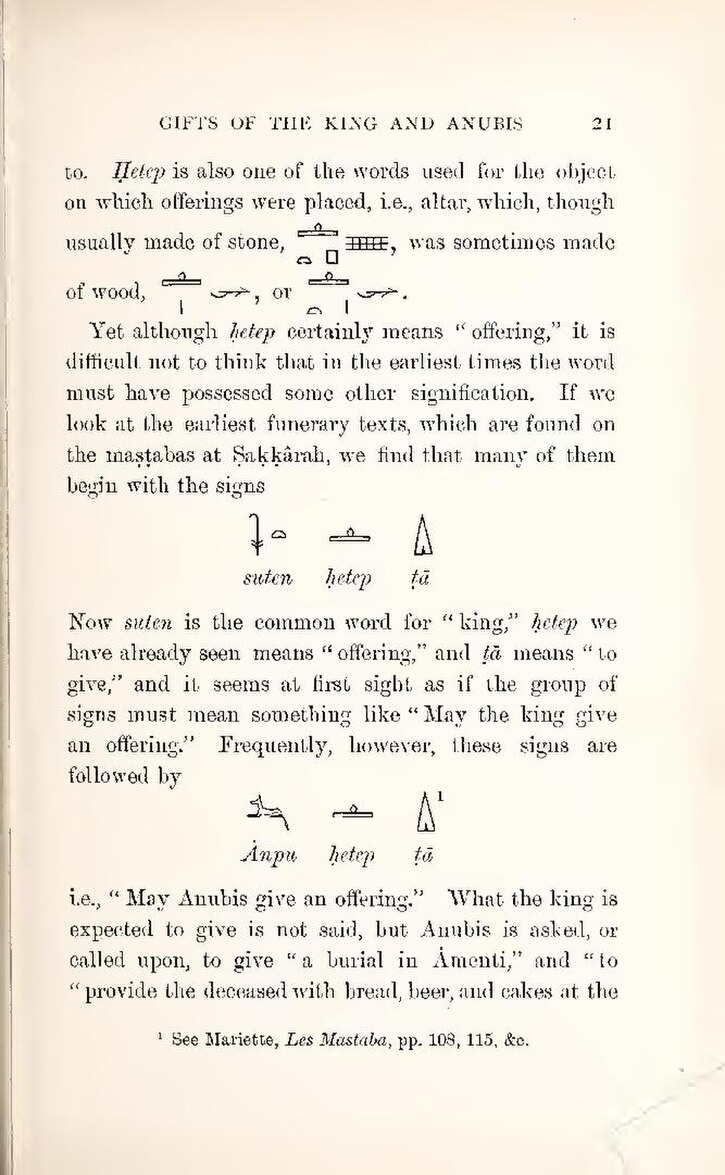to. Ḥetep is also one of the words used for the object on which offerings were placed, i.e., altar, which, though usually made of stone,
| |
, was sometimes made of wood,
| |
, or
| |
Yet although ḥetep certainly means "offering," it is difficult not to think that in the earliest times the word must have possessed some other signification. If we look at the earliest funerary texts, which are found on the maṣṭabas at Ṣaḳḳârah, we find that many of them begin with the signs
|
|
|
|
suten |
ḥetep |
ṭā |
Now suten is the common word for "king," ḥetep we have already seen means "offering," and ṭā means "to give," and it seems at first sight as if the group of signs must mean something like "May the king give an offering." Frequently, however, these signs are followed by
|
|
|
|
Ȧnpu |
ḥetep |
ṭā[1] |
i.e., "May Anubis give an offering." What the king is expected to give is not said, but Anubis is asked, or called upon, to give "a burial in Ȧmenti," and "to provide the deceased with bread, beer, and cakes at the
- ↑ See Mariette, Les Mastaba, pp. 108, 115. &c.
